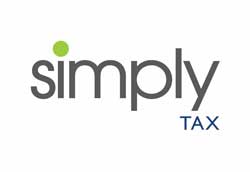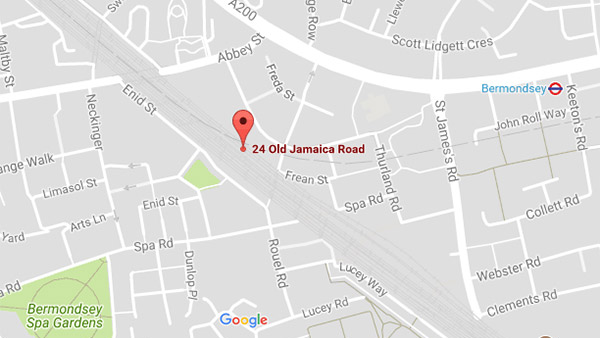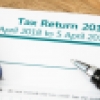- Posted byadmin
- Self Assessment, Tax Deductible Expenses, Property Tax, Personal Tax, Tax Planning, PAYE, P11d, Budget, Company Cars, Employment, Inheritance Tax, Investments, HMRC, Financial Planning
- 0 Comments
9 Changes to the 2017/2018 Financial Year
It's all change for the start of the new financial year. Here is a quick breakdown of those changes:
Personal Allowance and higher-rate threshold increasing.
The Government has an objective in place to raise the personal allowance to £12,500 by the end of this parliament. This is the amount of money you can earn before Income Tax is payable. At the start of this tax year (2017/2018) it has increased from £11,000 to £11,500. For higher-rate earners the threshold will increase from £43,000 to £45,000 in most of the UK but for Scotland the threshold for earned income will freeze at £43,000. The point at which National Insurance falls from 12% to 2% will also move to £45,000 across the UK leaving a rate of 52% for anyone living in Scotland earning between £43,000 and £45,000.
Buy-to-let Tax Relief.
Previously, residential landlords have been able to deduct mortgage interest and other allowable costs from their rental income before calculating their tax bill. Over the next four years the amount of Income Tax relief will be restricted to the basic rate of Income Tax (currently 20%).
As a UK resident these charges will affect you if as a UK resident you let residential properties as an individual, in a partnership or trust in the UK and overseas. If will also affect non-UK residents that let residential property in the UK. This will not affect companies nor landlords of furnished holiday lettings.
This will gradually come into effect: during the 2017/2018 tax year 25% of financial costs will be of basic rate tax reduction and 75% will be deductable from rental income. This moves to 50% during 2018/2019, 75% during 2019/2020 and by 2020/2021 100% will be at basic rate.
Family Home Allowance.
With house prices now significantly higher than they have been previously, more 'average' families are finding themselves over the tax-free threshold when they inherit. The former Chancellor George Osbourne wanted to increase the inheritance tax allowance to £1 million in order to balance that. To begin the move towards this, a new family home allowance aims to give an extra £350,000 inheritance tax-free allowance to married couples and civil partners. This came into effect on the 6th April 2017. The threshold is planned to increase again in 2018 to £125,000 and again at the beginning of the tax year in 2019. This allowance will only apply to your main residence which can only be left to direct descendants.
Isa Limit Raised.
The amount you can save yearly in your ISA has been substantially increased from £15,240 per year to £20,000 starting April 6th 2017. You can use this allowance on one kind of Isa or between a combination of cash Isa's, stock and share Isa's, the new Innovative Finance Isa's and Lifetime Isa's.
Launch of Lifetime Isa.
The new lifetime Isa was designed to help people save for their first house or for retirement and is open to anyone between the ages of 18 and 39. A 25% yearly top-up on savings is being introduced by the Government which can mean a bonus of up to £1000 per year. The money can be withdrawn tax-free to buy a first home worth up to £450,000 or be withdrawn tax-free after the age of 60. You can even open a Help to Buy Isa and roll it into a Lifetime Isa after you have bought your home. There are only individual Isa's available which means a couple can double their yearly top-up bonuses or if you're making a purchase with someone who has owned a home before, you can still benefit from the top-ups.
Apprenticship Levy.
The Goverment has commited to an additional 3 million apprenticeships in England by 2020. The levy aims to deliver new apprenticeships and support quality training. Employers with an annual pay bill of £3 million or over will be required to give 0.5% of the total to the levy and payments are set to start in May 2017. It is up to employers to notify HMRC if they qualify for payments. Once employers have registered and paid the levy they should be able to access funding through a digital apprenticeship service account which will allow them to select and pay Government-approved training providers. You will need to register and pay the levy if you:
- Have an annual pay bill of more than £3 million.
- Are connected to companies or charities for Employment Allowance which have an annual pay bill of more than £3 million.
- Your pay bill includes payments to employees that are subject to Class 1 secondary National Insurance contributions such as wages, bonuses and commissions but does not include payments to employees under the age of 16, earnings of employees not subject to UK NICs or earnings with Class 1A NICs such as Benefits in Kind.
Immigration Skills Charge.
From April 6th 2017 an Immigration Skills Charge will be charged to employers who recruit skilled (tier 2) workers from outside the European Economic Area. The ISC will need to be paid upfront when a certificate of sponsorship is assigned to an individual from the 'general' or 'intra-company' route who apply from: outside the UK for a visa, inside the UK to switch from one visa to another or to those inside the UK trying to extend their visa. This skills charge does not effect: those sponsored before April 6th 2017, tier 2 (Intra-company transfer) graduate trainees, specified PhD level occupations nor tier 4 student visa holders in the UK switching to a tier 2 (general) visa. You do not have pay the charge for the workers dependents.
The skills charge will be £1000 per person per year for medium and large sponsors and £364 for small or charitable sponsors (if your annual turnover is £10.2 million or less and you have 50 or less employers).
Changes to non-UK Domicilaries Taxation.
From April 6th 2017 people who have lived in the UK for at least 15 out of the past 20 years but who are domiciled elsewhere will be subject to new Income Tax, Inheritance Tax and Captial Gains Tax measures. They will now be taxed on any new income and gains by UK regulations and Inheritance Tax will also follow the 15/20 rule. Those who become UK domicillaries in April 2017 will be given transitional protection in the forms of rebasing chosen assests to their market value at that date, removing any accumulated gain and the cleansing of mixed bank accounts. Assets held in non-UK trusts, settled by non-UK domicilaries will not be affected by these measures.
Regulations for Gender Pay Gap Reporting.
Employers with more than 250 staff now have twelve months to publish the difference in pay between their male and female staff. Each employer is now required to divulge the difference in hourly rate and bonus averages in addition to the proportion of men and women receiving bonuses and the proportion in the best, worst and middle-paying jobs. This information must be made available on both their websites and a central government site and can even include a narrative in explanation. Employers with less than 250 employees are welcome to publish themselves on the central network but are not required to do so. Employees to be counted follow from the 2010 Equality Act and include some self-employed people as well as agency workers to be counted by the agency. This will allow both employees and possible new recruits to review the pay gap themselves.









